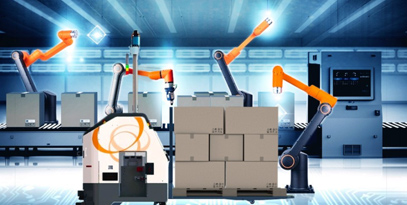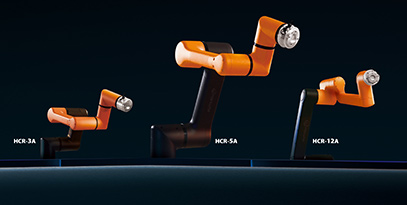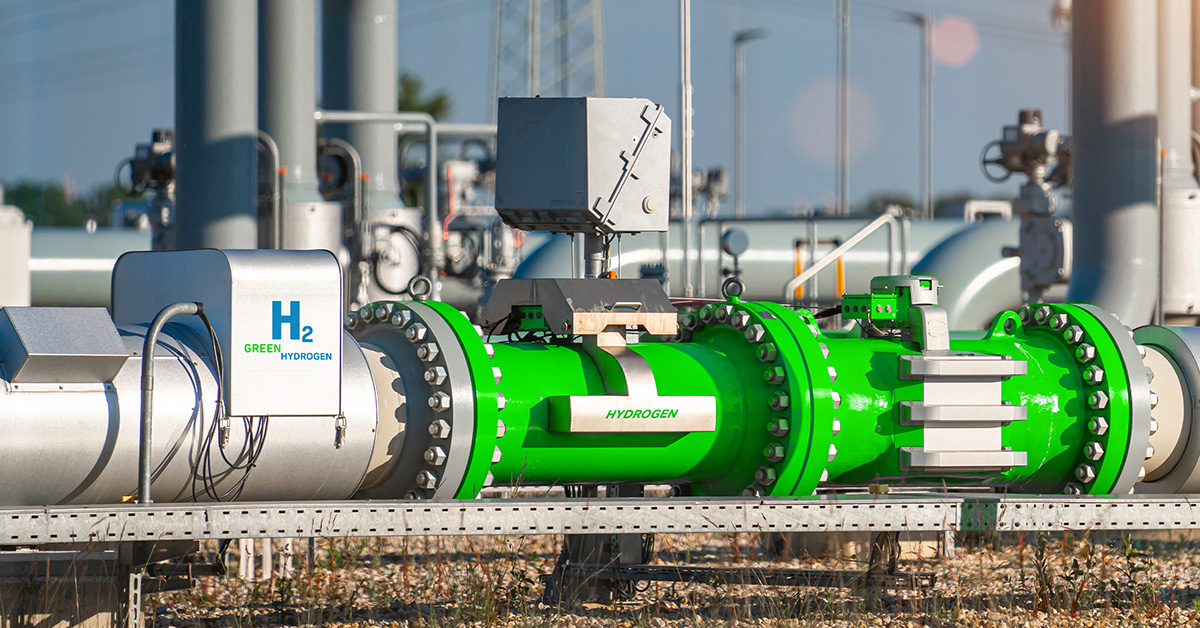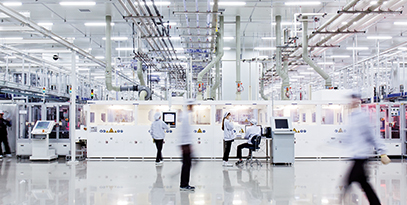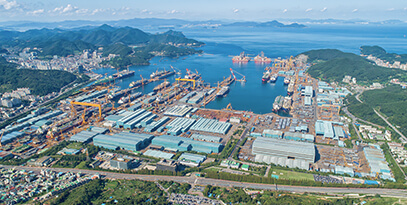Hitting refresh: How cobots shape the future of
work and industry

In today's fast-paced world of technological progress, robots are no longer just a vision of the future: they're becoming a part of our everyday reality.
The world is in the middle of the Fourth Industrial Revolution. This era of connectivity, advanced analytics, and advanced manufacturing has been transforming global business for years — and at the center of it all is automation. While the digital revolution has improved working conditions across various industries, many workers still suffer in difficult, physical jobs. However, robotics technology has the potential to make this a thing of the past, reshaping how we work and interact with technology.
Since their invention in 1996, collaborative robots, or "cobots," have revolutionized automation, offering versatility, affordability, and ease of use to companies of all sizes. Designed to work hand-in-hand with employees, today’s cobots have outpaced sales of industrial robots and are projected to grow by 12% from 2020 to 2030.
As these machines become more common, it's important to explore both the opportunities and challenges they bring in upgrading our workplaces and societies — after all, technology is only half of the equation. Because of their transformative potential, many questions arise: Will robots one day replace humans in assembly lines? How will AI impact the cobotics industry? And ultimately, will this technology enhance lives?
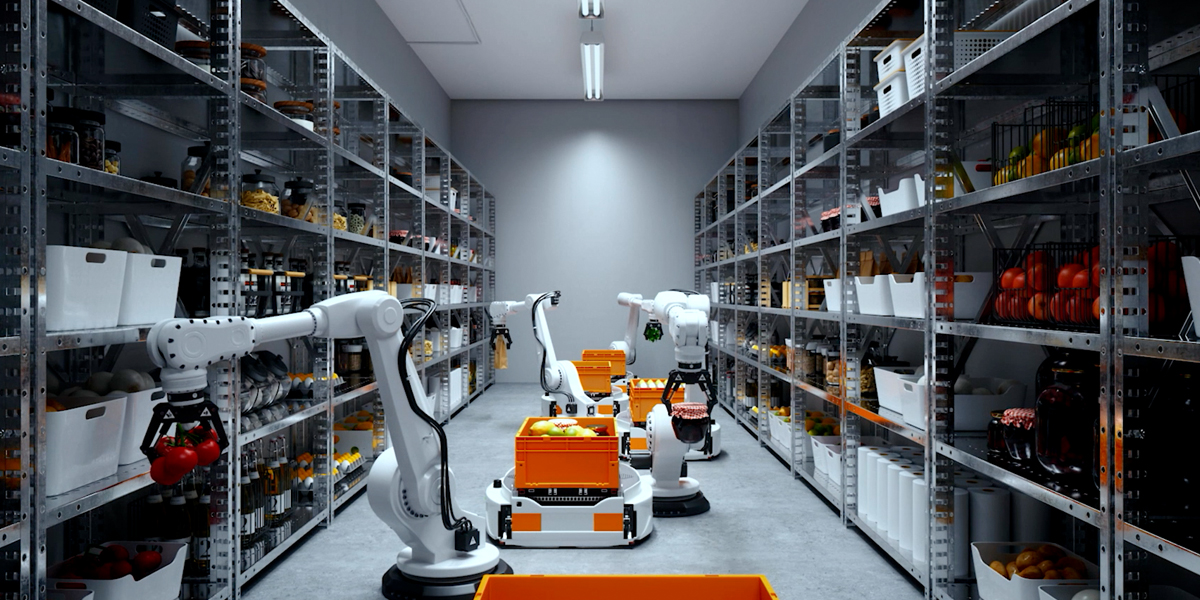
Crafting success with cobots
Programmed for problem-solving, cobots offer numerous advantages for both workers and workplaces. Unlike their industrial counterparts, cobots are often compact, lightweight, and highly portable. Their installation is easy, and setting them up requires little to no programming experience. Once deployed, they can streamline operations, with MIT researchers reporting an 85% decrease in human idle time when working in a robot-human team compared to a team of only humans.
Cobots can increase workplace safety in several ways. The machines are equipped with advanced sensors to detect human presence, letting them proactively
halt operations to prevent accidents. In addition, by carrying out repetitive, tedious, and physically demanding tasks, cobots not only free employees to focus on more complex and creative work but also reduce the risk of occupational injuries. According to the European Agency for Safety and Health at Work, 80% of people who work in positions that cause physical strain, 60% of people who carry or move heavy loads, and more than half of people who engage in repetitive hand or arm movements have musculoskeletal disorders. However, unlike humans, robots don’t suffer repetitive motion injuries to shoulders, elbows, and wrists, nor can they develop respiratory illnesses from airborne particles released during sanding and grinding. By taking on hazardous or strenuous tasks for their human counterparts, cobots reduce the risk of workplace injuries. Additionally, cobots play a crucial role in increasing workplace accessibility for aging workers or people with disabilities.
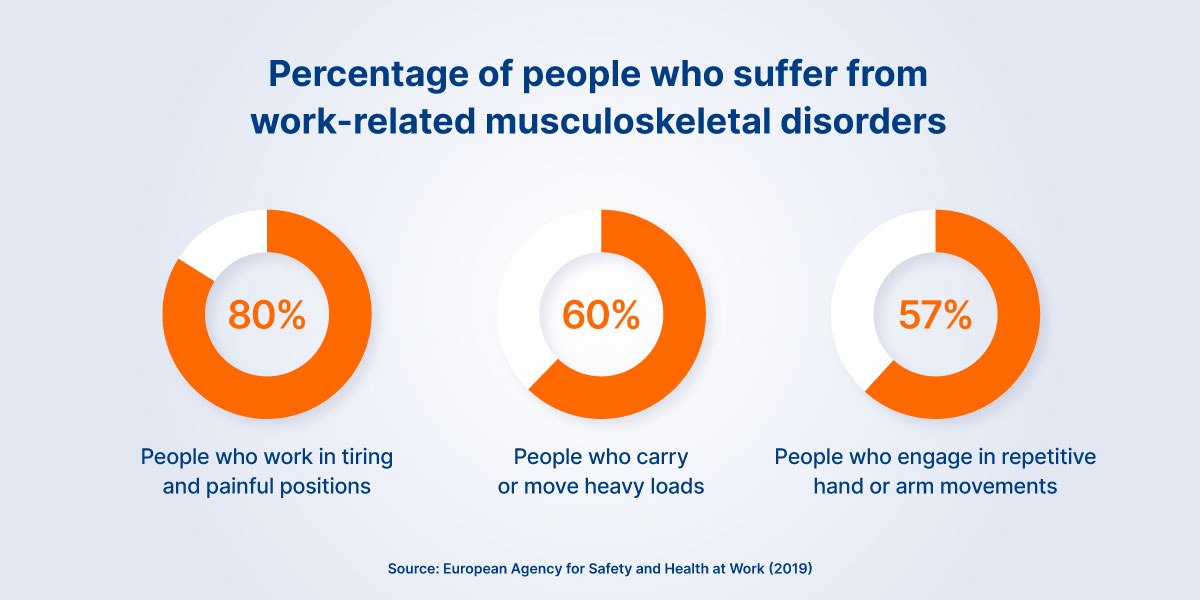
These benefits extend across many industries. From logistics to food service, healthcare to automotives, and even hospitality, cobots are flexible and can be used in various tasks ranging from simple item handling to complex surgical assistance. As challenges in labor shortages persist and automation becomes increasingly essential, cobots are indispensable allies to companies and employees, enhancing workplaces and elevating productivity and safety standards across the board.
Cobots on the clock
Today, robots are gearing up to take their place in the workforce. One country that’s already taking advantage of robots to combat a demographic-driven labor shortage is South Korea, which has more robots per worker in the manufacturing industry than any other country.
This can be particularly seen in the shipbuilding industry, which has traditionally relied on skilled labor for tasks like painting, cutting, and welding to construct large vessels. However, with an ongoing lack of qualified workers, meeting production demands has become increasingly challenging for companies in this field.
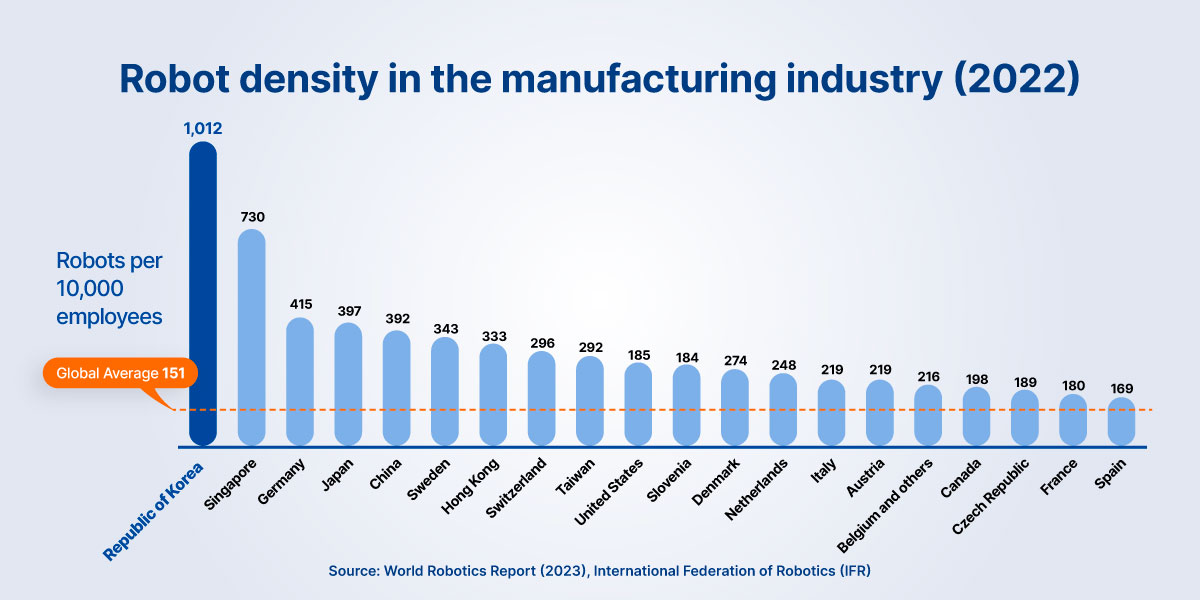
Hanwha Ocean is putting cobots into practice to address labor shortages and reduce the burden for humans in the workplace. The company is using Hanwha Robotics’ latest HCR-5A model to work alongside humans in shipbuilding, particularly in tasks like welding, which can be repetitive and risky, and painting, where the quality can vary by worker. By introducing cobots, Hanwha can ensure that work is consistently high-quality and safe, regardless of the operator’s skill level. Additionally, the data generated by cobot processes can even be used to create digital twins, allowing real-time monitoring of worker performance and pinpointing areas for improvement.
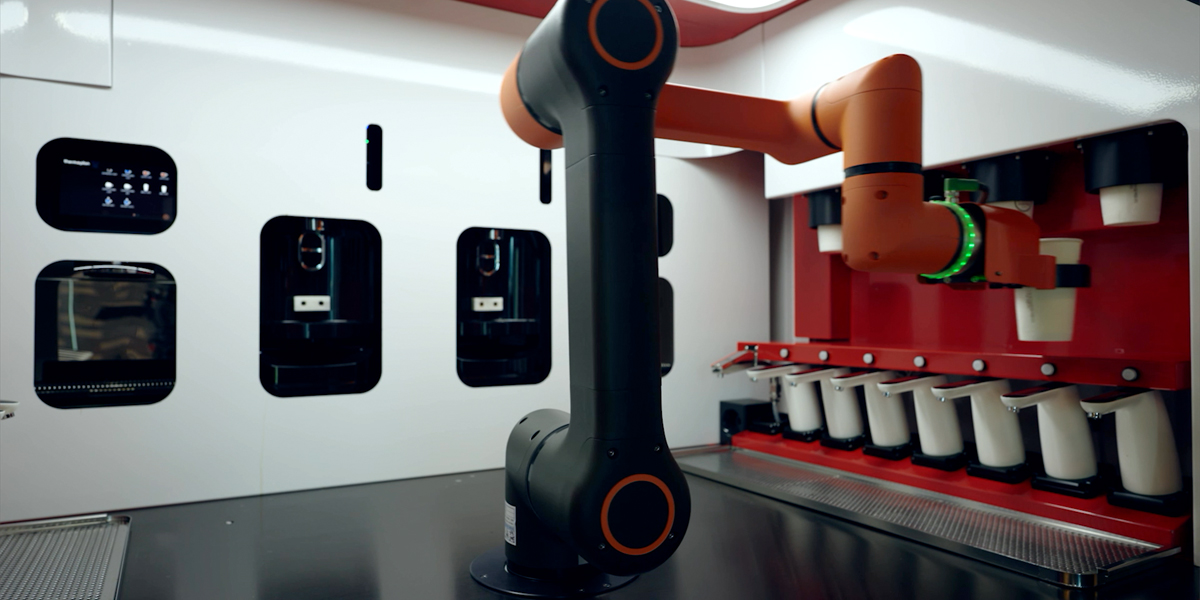
Hanwha Robotics’ HCR-5A cobot working as a barista at a cafe
But the HCR-5A isn’t just limited to the shipbuilding industry. Hanwha’s cobots are clocking in across a variety of workplaces, and its own affiliates are just the beginning. Cobots are versatile and already hard at work performing handling and transportation tasks, such as attaching labels on production lines or inserting balls at ball-bearing factories. Hanwha’s cobots also work in food service, acting as baristas or cooks. Hanwha Hotels & Resorts is exploring the use of cobots not only for food and beverage preparation, but also for facility management and security functions. With a variety of cobots spanning robotic arms, mobility, and vision technologies, Hanwha can cater to the unique needs of every company.
But no matter the industry, what’s most important to introducing cobots into the workplace is making sure that workers feel safe and comfortable working alongside them.
The future of work
Despite the benefits of cobots, for many members of the world’s workforce, change can sometimes be seen as a threat, particularly when it comes to technology. This is often coupled with fears that automation will replace people.
However, as cobot technology is increasingly integrated into workplaces worldwide, scholars are finding it unlikely that robots will completely replace the human workforce. While machines can indeed take over repetitive, low-skill, and dangerous tasks in manufacturing or warehouse jobs, humans still remain essential for high-skilled innovation, critical decision-making, and emotionally intelligent roles. Rather than robots leading to redundancies, automation has been shown to result in either shifts in existing workplace roles or the creation of entirely new roles.
However, before robots can fully clock in at work, the world still needs to fine-tune interactions between robots and humans. This will involve teaching people to respond to requests from robots or to anticipate their needs as much as the other way around. While efforts to humanize robots, like adding smiley faces, may initially raise some eyebrows, one day, humanity is likely to embrace cobots with the same enthusiasm as they now use smartphones — or become like the families who treat their robot vacuum cleaners as beloved pets.
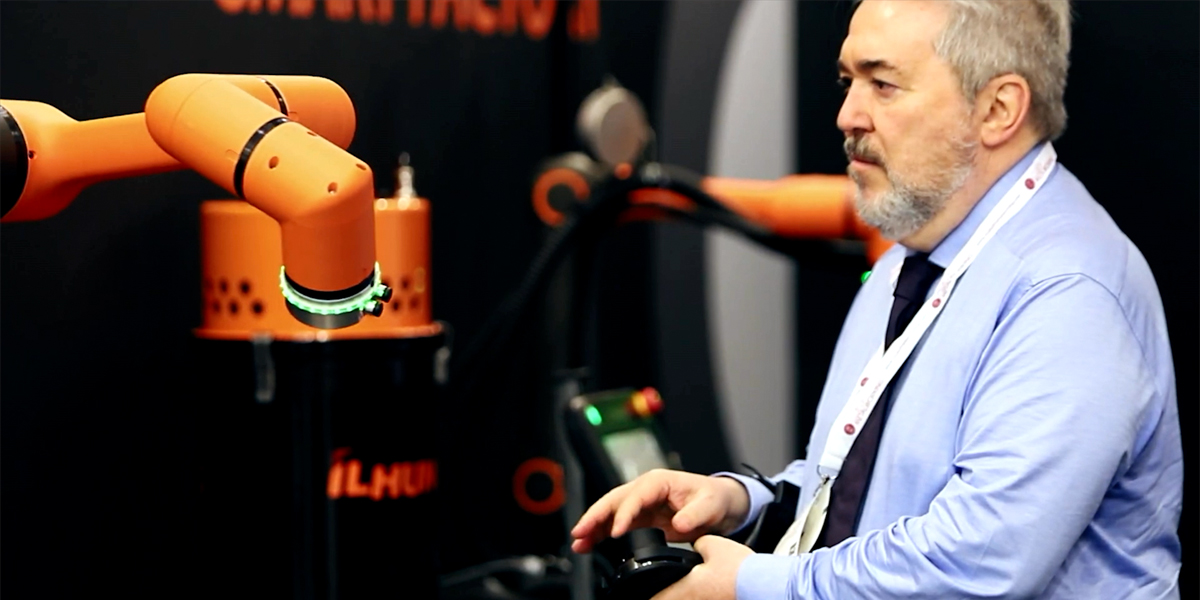
Advancements in AI, particularly in natural language models, offer the potential to improve communication and facilitate deeper collaboration between humans and devices. However, while the integration of cobots promises to revolutionize industries, it also presents new challenges and considerations. Therefore, we must begin with guidelines and policy changes to support the safe use of cobots in the workplace, which is a responsibility that lies with both robotics suppliers and end consumers.
By fostering a culture of collaboration between humans and robots and prioritizing safety, innovation, and dignity of work, we can confidently navigate this evolving landscape. With continued advancements in cobot technology, we are not just building a more productive world, but also paving the way for a future where humans and robots work hand in hand.


